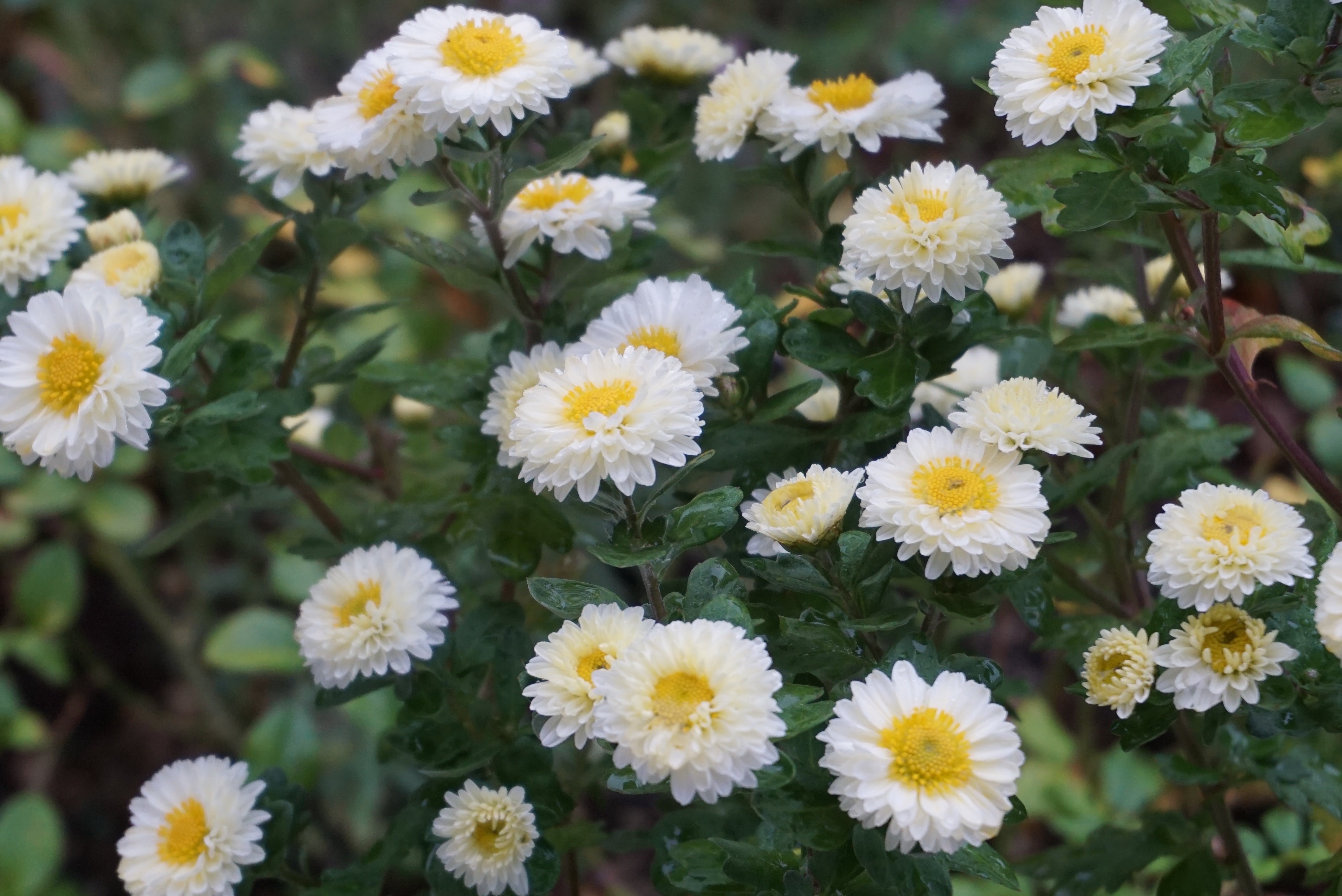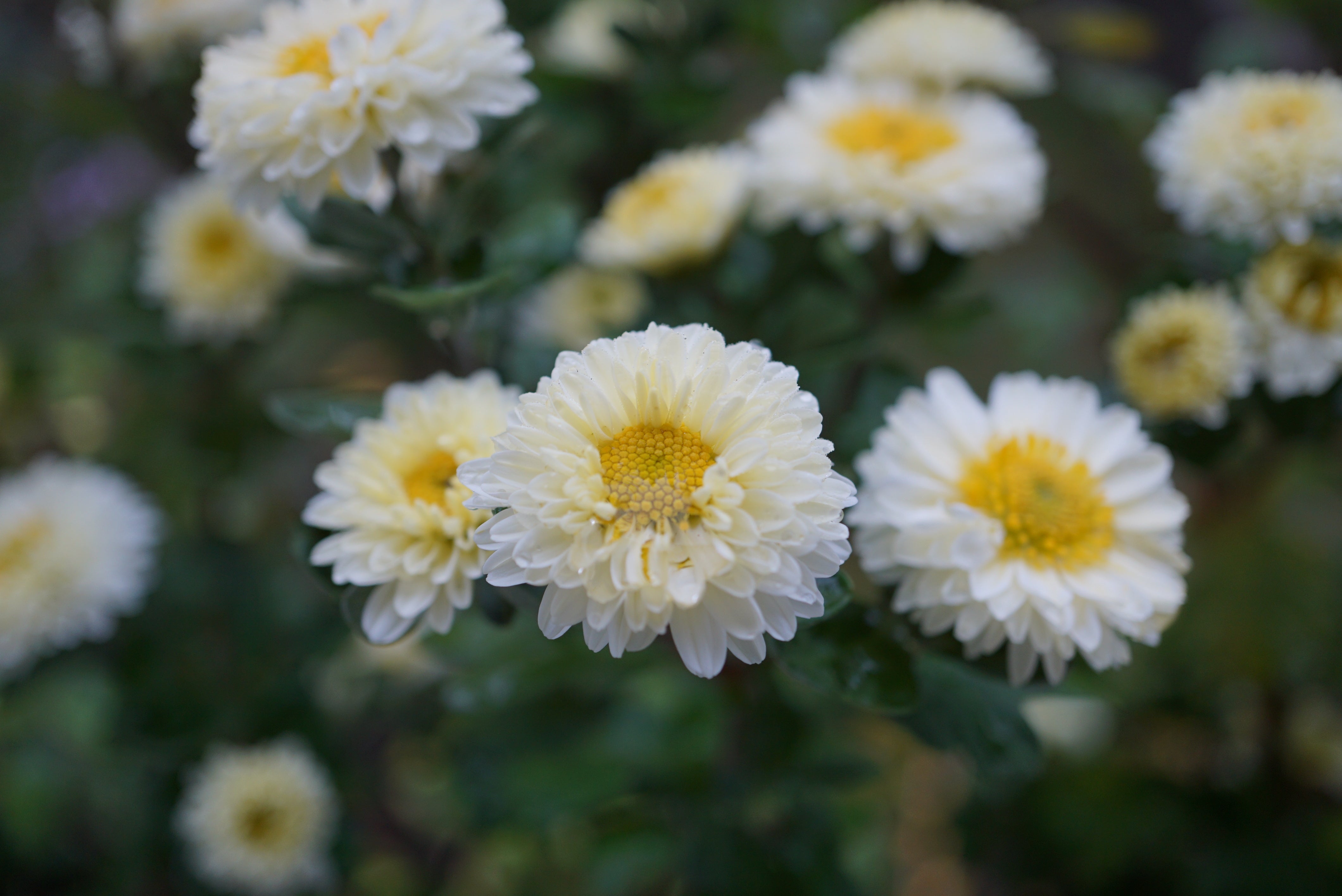Chrysanthemum 'Poesie'
Approx. 0.5 litre pot
About this cultivar:
Chrysanthemum 'Poesie' produces double flowers that emerge creamy-white but turn whiter as the season progresses. Lasts well as a cut flower. very hardy, it was first found in a garden in Romania’s Carpathian Mountains by nurseryman Wolfgang Kautz of Potsdam, Germany. Tough! I believe it translate as 'Poetry'....
Interestingly Wolfgang Kautz is also a great philanthropist. Since 1990 he has been using the proceeds from his crops to purchase relief supplies, which he personally drives to Romania several times a year. He has even learned Romanian for this and can also communicate in the language of the Sinti and Roma, who are particularly discriminated against in Romania and who are mostly extremely poor.
Another project he supports is a soup kitchen in Jerusalem, run by Dr. Hillel Goldberg and his sons. A long time ago, in 1950, Dr. Hillel Goldberg saved the then seven-year-old Wolfgang Kautz from starvation after the war and his expulsion from Silesia.
- Position: Full sun, partial shade
- Soil: Almost any soil, grows well in Ballyrobert
- Flowers: September, October, November
- Other features: Grows well in Ballyrobert
- Hardiness: H4 - Hardy through most of the UK (-10 to -5°C), Fully hardy - grows well in Ballyrobert!
- Habit: Bushy, Clump forming
- Foliage: Deciduous
- Height: 45 - 75 cm (1 - 2 ft)
- Spread: 30 - 60 cm (1 - 2 ft)
- Time to full growth: 2 to 5 years
- Plant type: Herbaceous Perennial
- Colour: White, yellow, green
-
Goes well with: Swathes. Try with Geranium.
About this genus:
Chrysanthemums, sometimes called mums or chrysanths, are flowering plants of the genus Chrysanthemum in the daisy family (Asteraceae). They are native to Asia and northeastern Europe. Most species originate from East Asia and the center of diversity is in China. There are about 40 valid species, however there are countless horticultural varieties and cultivars!
The genus name "chrysanthemum" is derived from the Greek words chrysos (gold) and anthemon (flower). The genus once included more species, but was split several decades ago into several genera, putting the economically important florist's chrysanthemums in the genus Dendranthema. The naming of the genera has been contentious, but a 1999 ruling of the International Botanical Congress( Bond Villains or what!?) changed the defining species of the genus to Chrysanthemum indicum, restoring the florist's chrysanthemums to the genus Chrysanthemum.
Chrysanthemums were first cultivated in China as a flowering herb as far back as the 15th century BC. Over 500 cultivars had been recorded by the year 1630! The Japanese Emperor adopted the flower as his official seal where the "Festival of Happiness" celebrates the flower.
Chrysanthemum prefers full sun but will tolerate part shade. Soil wise - anythign that isn't a pond or desert should be fine. When happy, chrysanthemum may spread via rhizomes to form a large patch. The beautiful flowers are bee and butterfly magnets.
Chrysanthemum plants look great in pots, in a formal or informal perennial border, on slopes, or massed together as a groundcover. Their tight formal habit means that chrysanthemum pairs well with clump-forming ornamental grasses, and other plants with a similar habit. I like them with Geranium or in large patches by themselves. Few plants are capable of flowering so well in the second half of October and often into November.






